Kokopelli represents a mischievous trickster or the Minstrel, the spirit of music, also considered a symbol of fertility who brought well-being to the people, assuring success in hunting, planting and growing crops, and human conception. Often represented as a humpbacked flute player in a dancing pose. Kokopelli is associated with being a storyteller, teacher, healer, trickster, trader and a god.
For this project, we are tasked to create a physical wearable fabric/ form for Kokopelli, according to the sound produced by the environment using a pleasant or unpleasant sound. My chosen word is the leg, and Amanda’s is the neck. We started off by using paper to sharp out the ‘sound’.
How Humans hear:

The human ear is made up of three main portions, the outer ear, the middle ear, and the inner ear. The outer ear is made up of the pinna, which are the ears you see on the sides of your head, and the ear canal.
Sound waves enters the pinna goes into the ear canal until they reach the eardrum, where the middle ear is. The eardrum passes the vibrations through the middle ear bones or ossicles into the inner ear, also known as a cochlea. The cochlea has thousands of tiny hair cells that change the vibrations into electrical signals which are then sent to the brain through the nerves. The brain then registers the sound.
How Frogs hear:
 A frog’s ear works in a way very similar to that of humans. They too have an eardrum called tympanum that vibrates. A rod connected to the tympanum intercepts sounds or pressure waves coming towards the frog. The rod sloshes around in the inner ear fluid, causing microscopic hairs to move. This movement initiates signals to the brain for registration.
A frog’s ear works in a way very similar to that of humans. They too have an eardrum called tympanum that vibrates. A rod connected to the tympanum intercepts sounds or pressure waves coming towards the frog. The rod sloshes around in the inner ear fluid, causing microscopic hairs to move. This movement initiates signals to the brain for registration.
STUDYING HUMAN ANATOMY:
FOR NECK:

Flexion refers to the motion that allows you to bend your head downwards. In a normal flexion, your chin will go towards your chest. A common range of motion for flexion is 60 degrees.
Extension is when you tilt your head backwards, a common range allows you to look at the ceiling. An acceptable range of motion from the neutral position is 60 – 70 degrees.
Rotation is when you turn your head to the right and to the left so that you look to the side. The accepted range of motion for rotation is 80 to 90 degrees.
Bending is when you move your neck such that your ear leans toward your shoulder while you still facing straight ahead. The normal range of motion is 45 degrees.
FOR LEG:

The major muscles in the upper leg are the hamstrings and quadriceps. The hamstrings are three muscles at the back of the thigh that affect hip and knee movement. The quadriceps—the strongest and leanest muscles in the body — are a four-muscle group at the front of the thigh that works to extend the knee and lower leg.
The knee is a pivot-like hinge joint in the leg that connects the bones in the upper and lower leg. It is the largest joint in the human body. The knee is where the femur in the upper leg meets with the tibia and fibula bones in the lower leg. Another bone, the patella or kneecap, is at the centre of the knee.
The knee joint is composed of numerous tendons, ligaments, and protective elements, such as cartilage and bursa. These connective and protective tissues keep the bones in place and prevent them from grinding against each other while allowing the knee joint to flex and twist slightly.

HOW WE USE LEGS:
1. Walking – move at a regular pace by lifting and setting down each foot, in turn, never having both feet off the ground at once.
2. Running – move at a speed faster than a walk, never having both or all the feet on the ground at the same time.
3. Bending – move (a jointed part of the body) to an angled position.
4. Kicking – a blow or thrust with the foot or feet.
5. Squatting – to sit in a low or crouching position with the legs drawn up closely beneath or in front of the body
6. Jumping – to cause to leap; to skip or pass over
SOUND:
Pleasant Sound – Sound of a cashier scanner
Unpleasant Sound – Sound of a cashier keyboard
IDEATIONS:
FOR NECK:
#001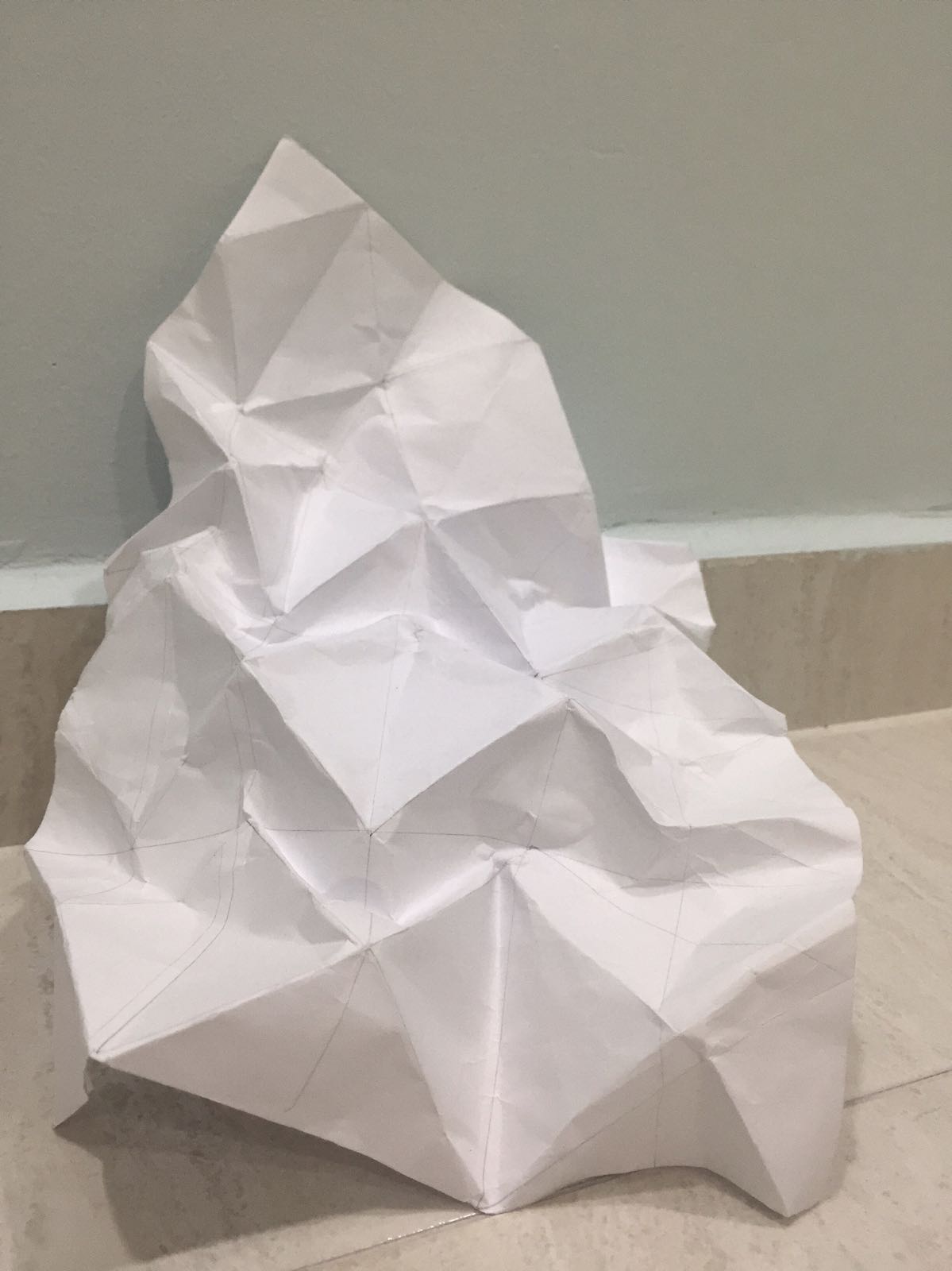
#002 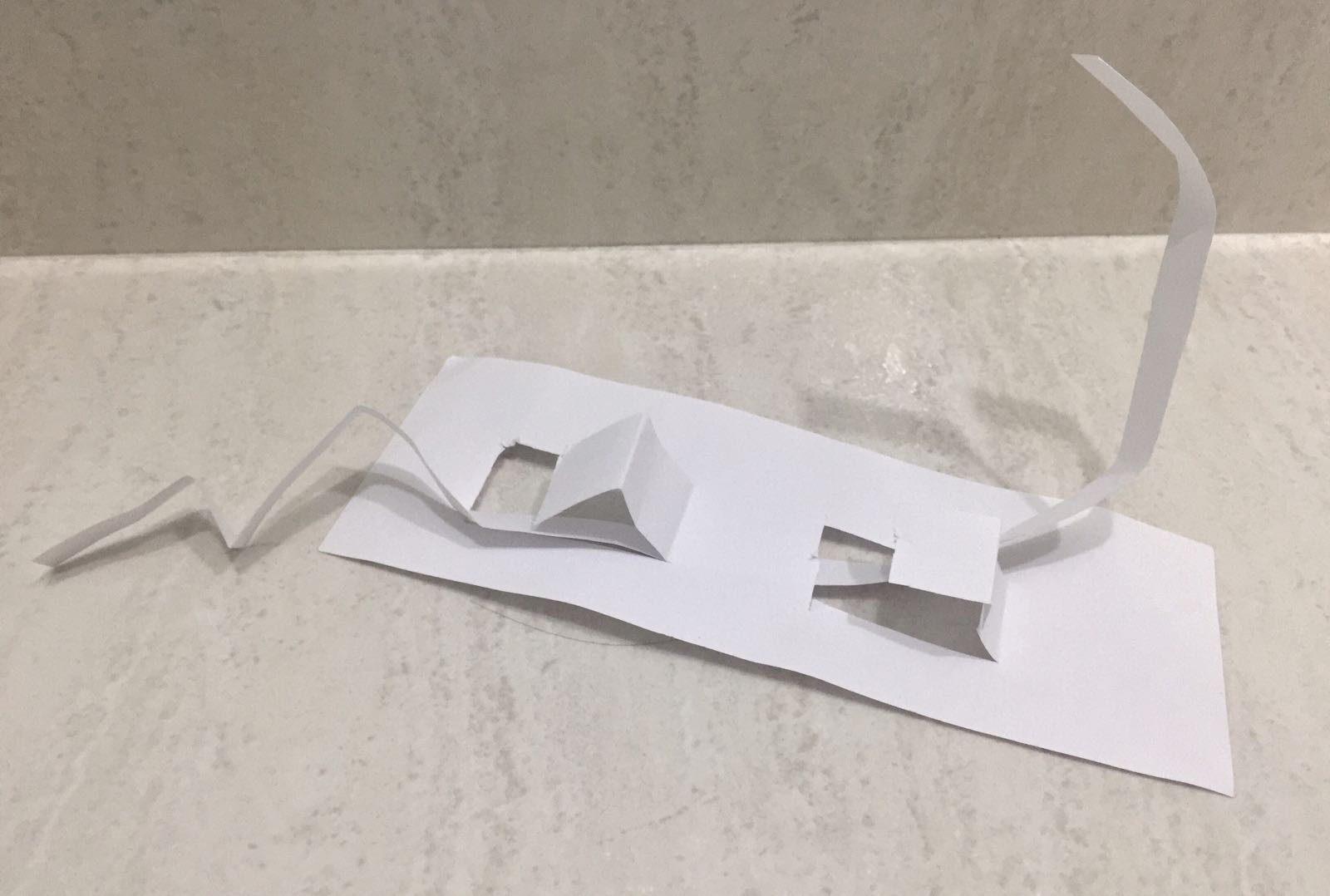 #003
#003 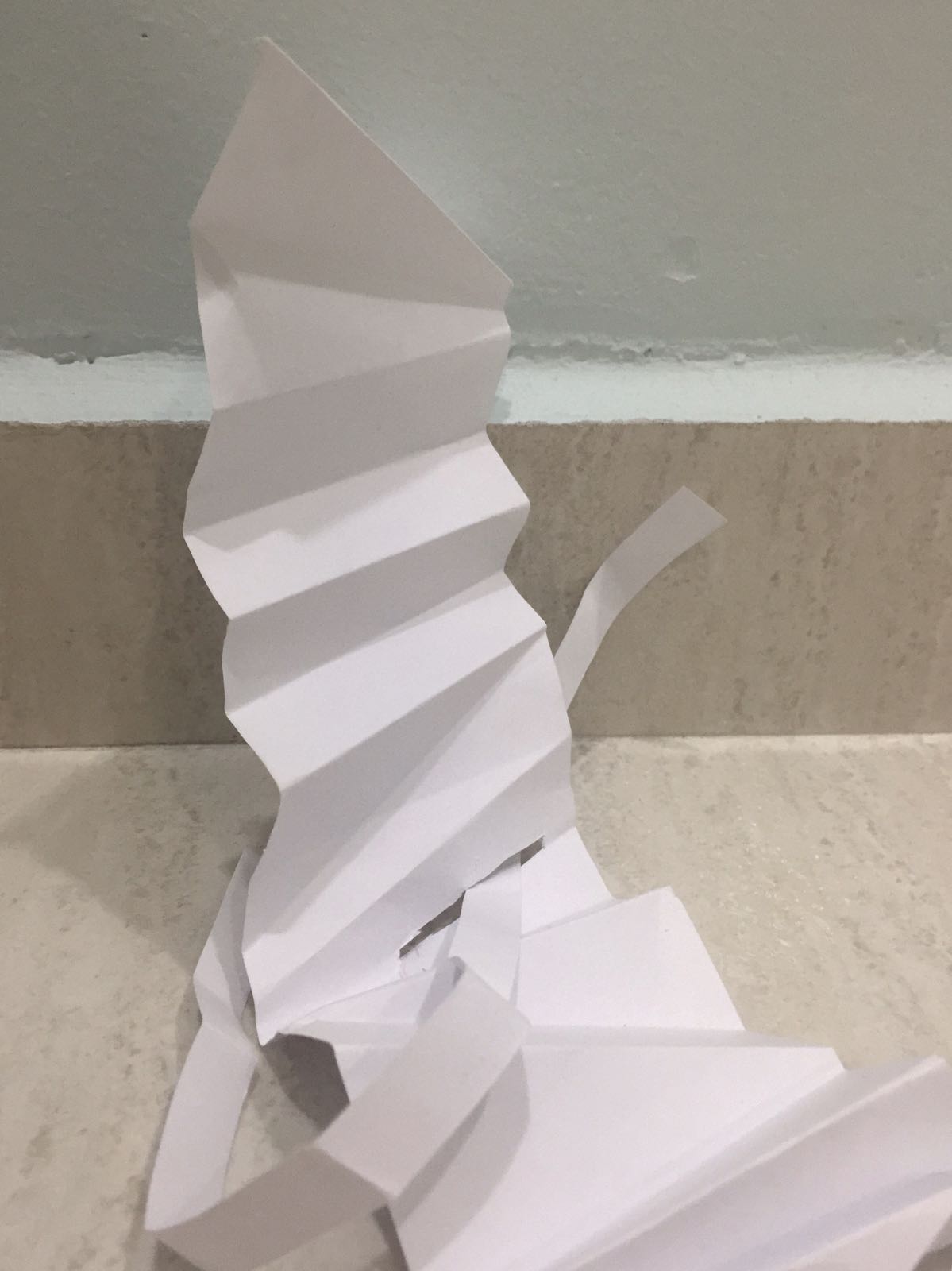
For legs:
#004: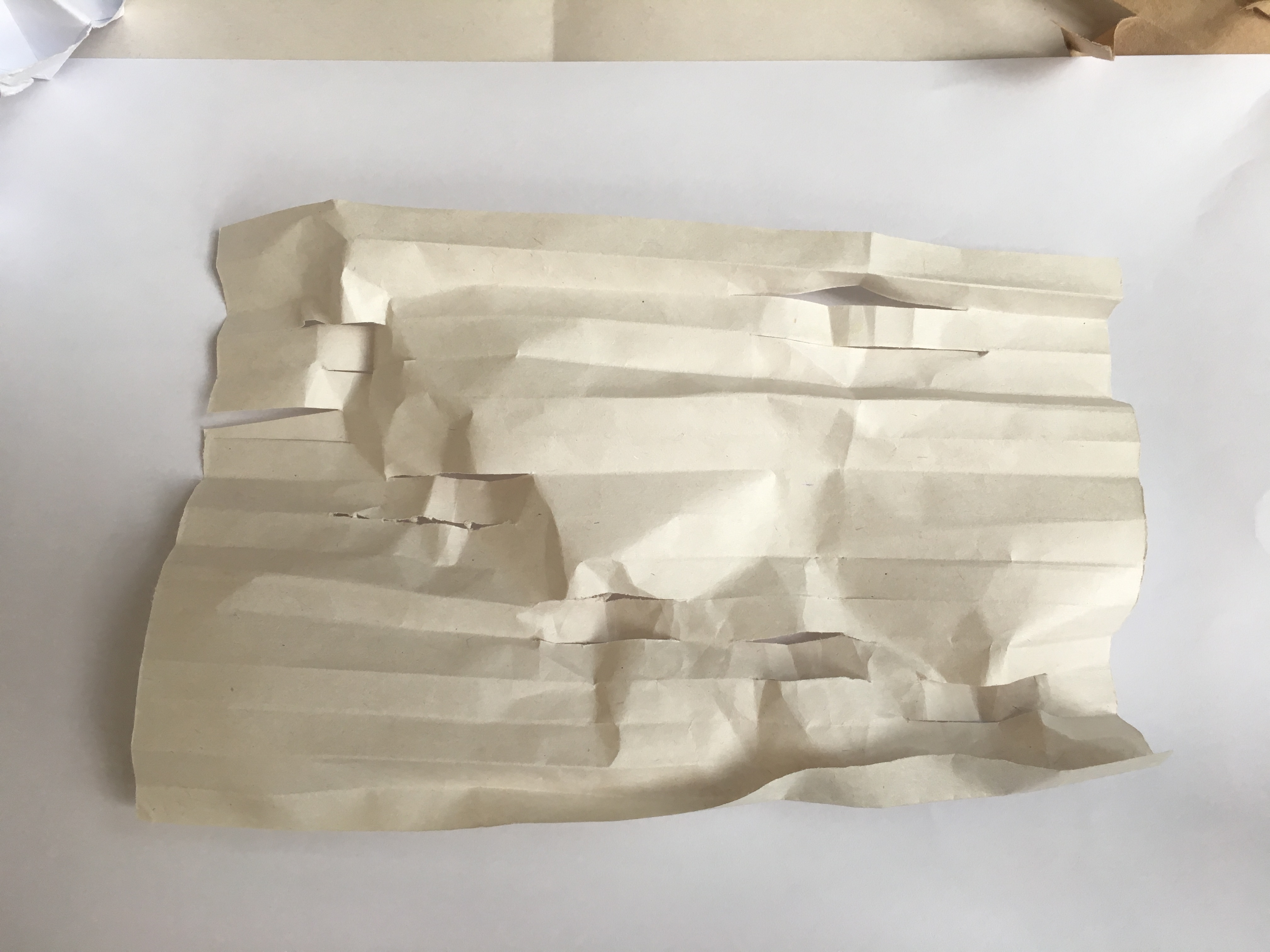
#005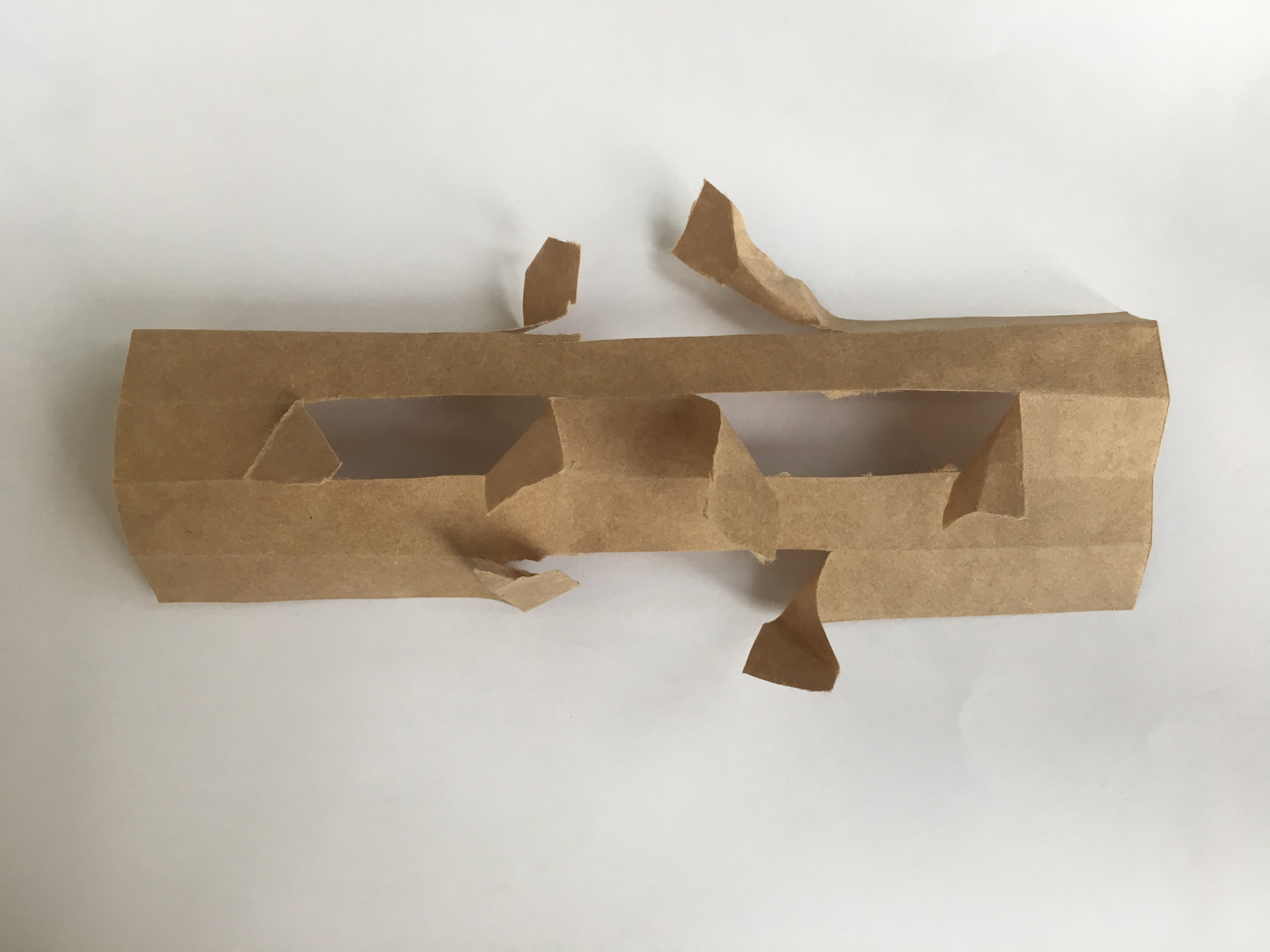
#006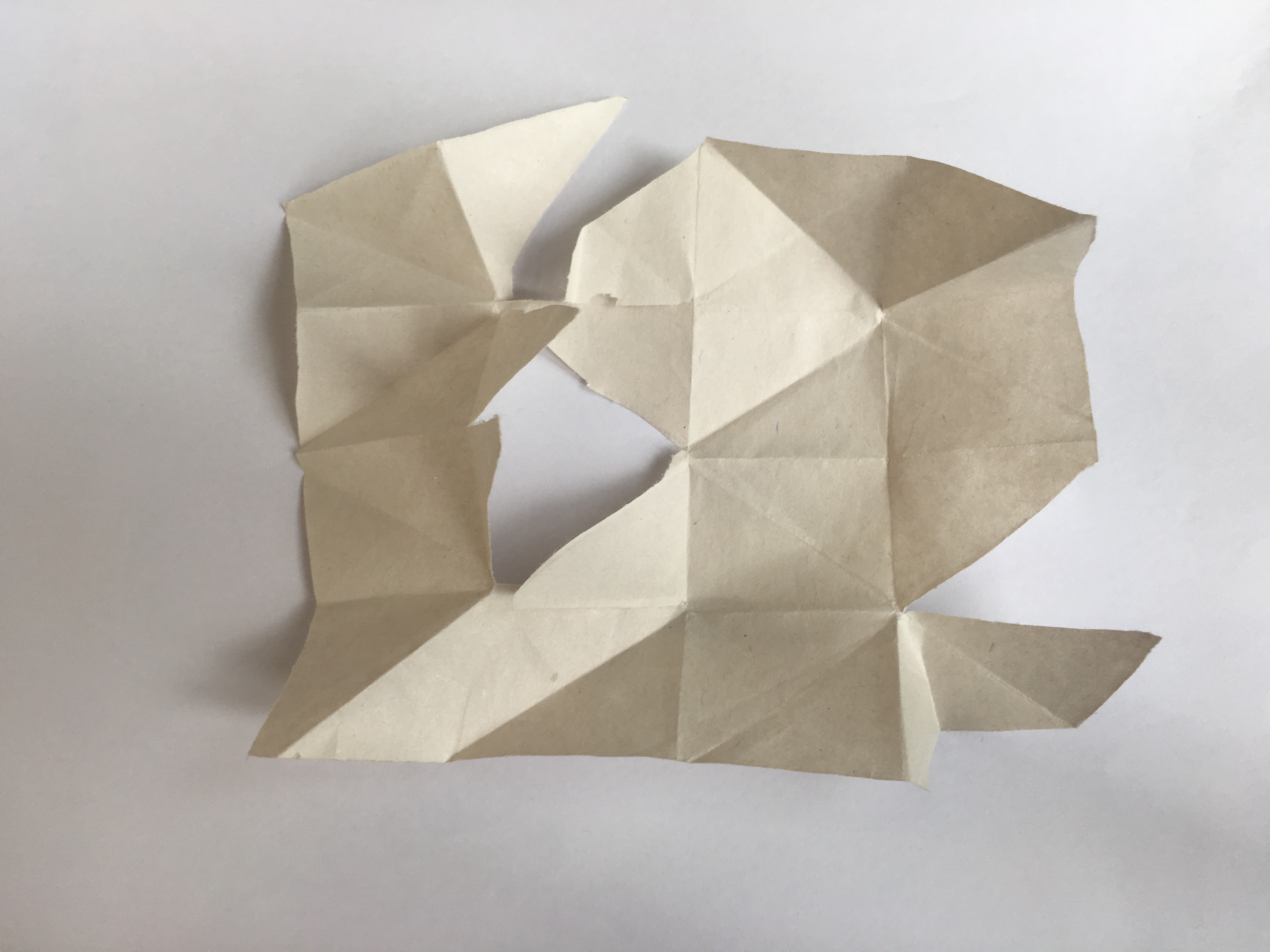
Creating folds using a triangle shape, scoring, folding and cutting.
We’re inspired by the fold from #003 (Legs), and thought of it may be something similar to the game we play in our childhood. So we further research on it and turn it into a module. The folding of the second model further let us think of the game that we use to play young, ‘the fortune telling game’.

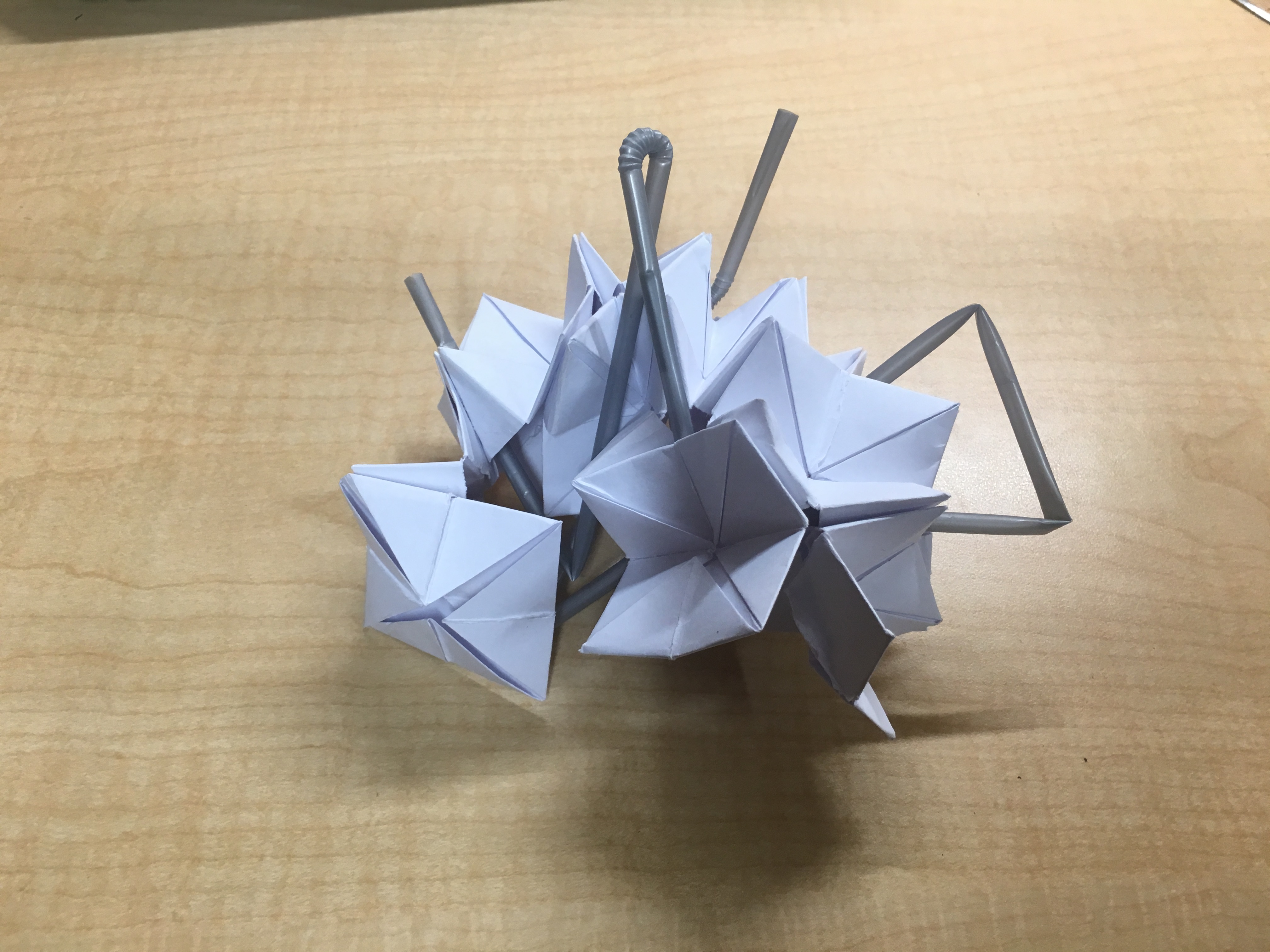
to be continued…
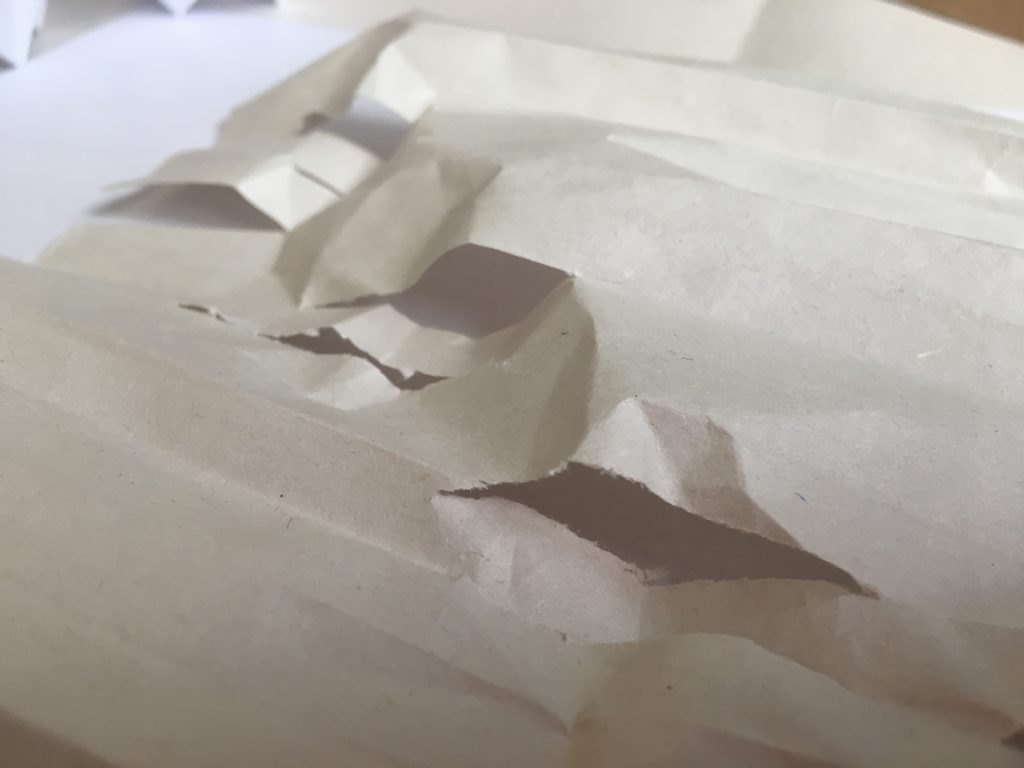

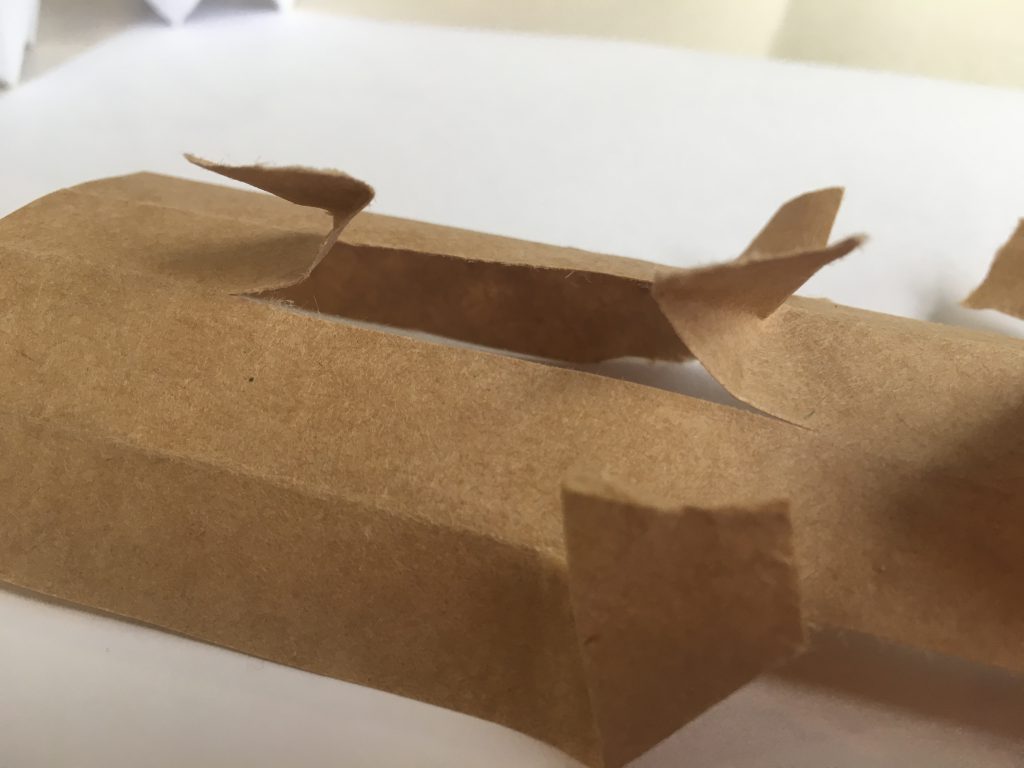
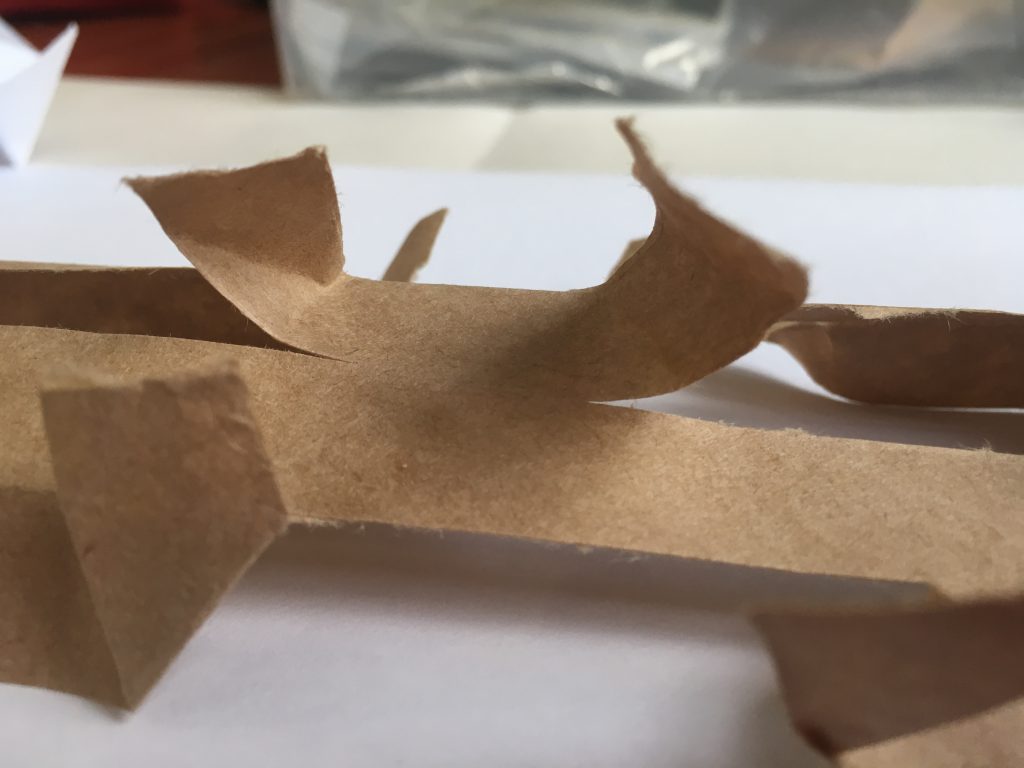
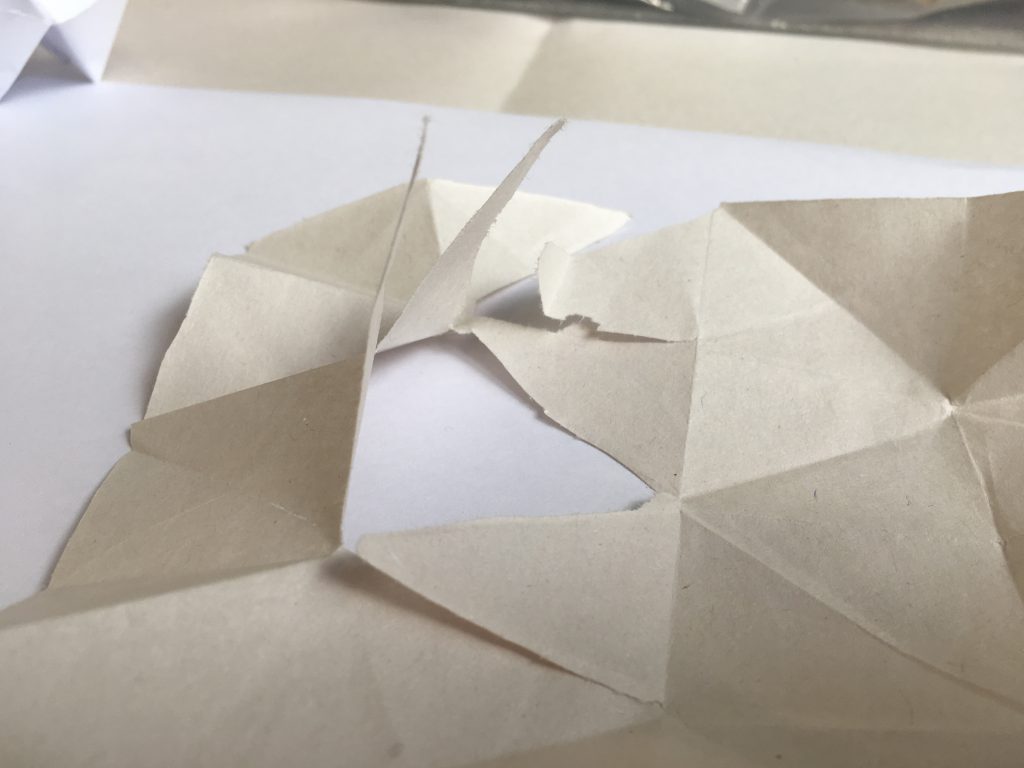
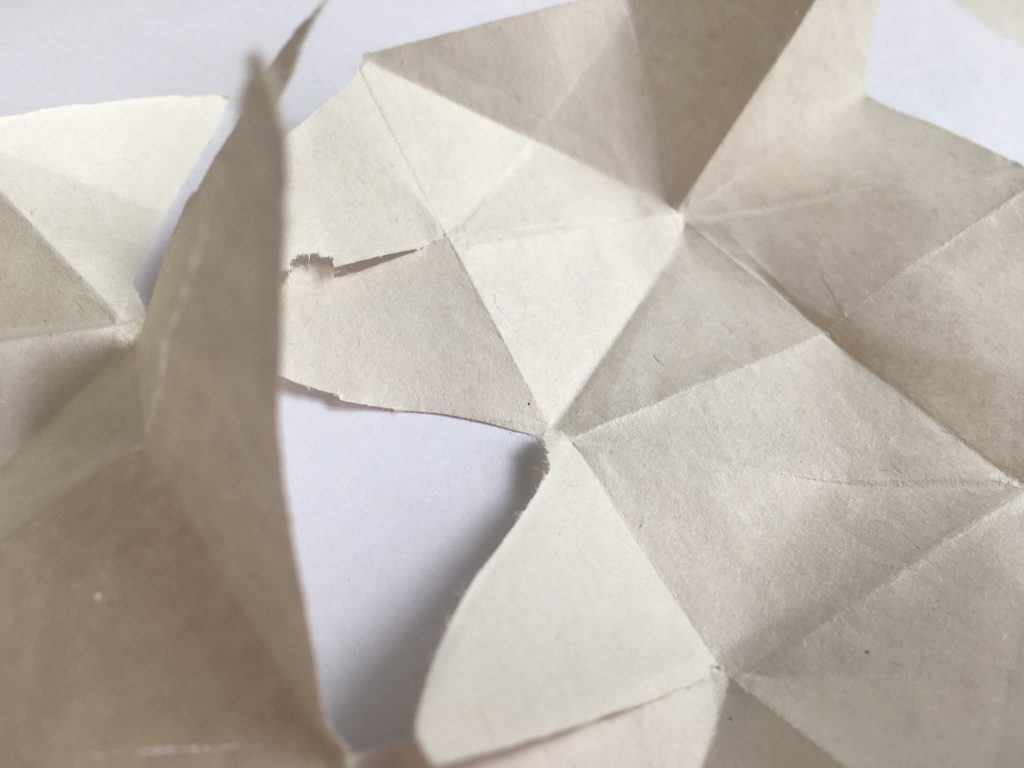
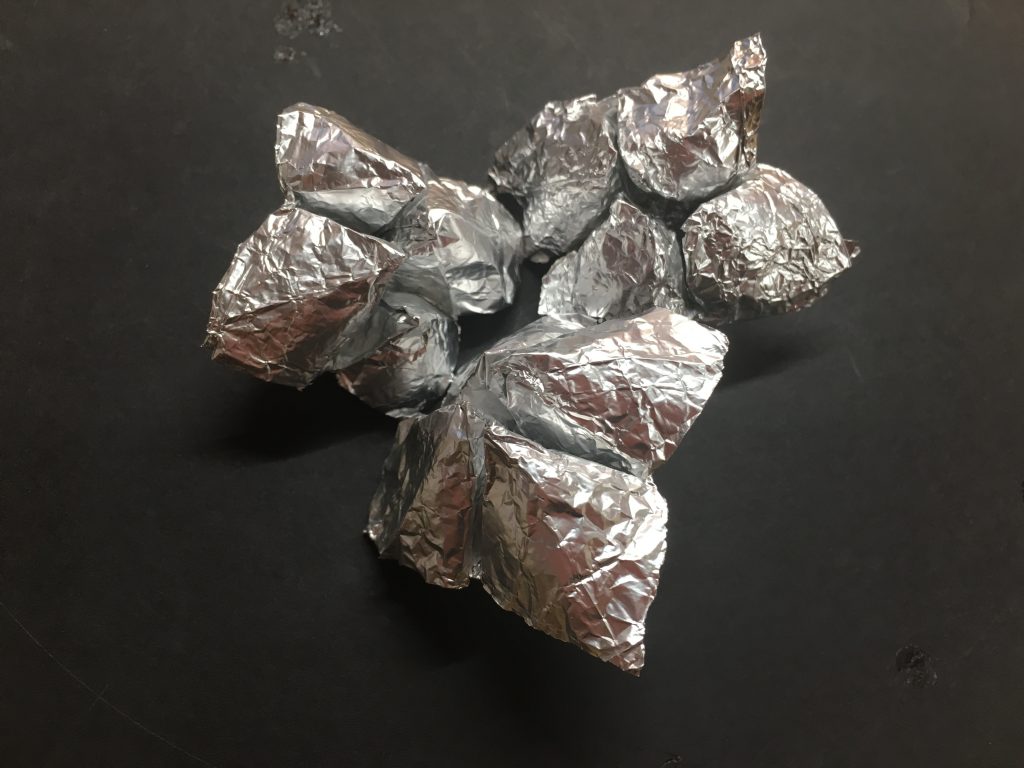
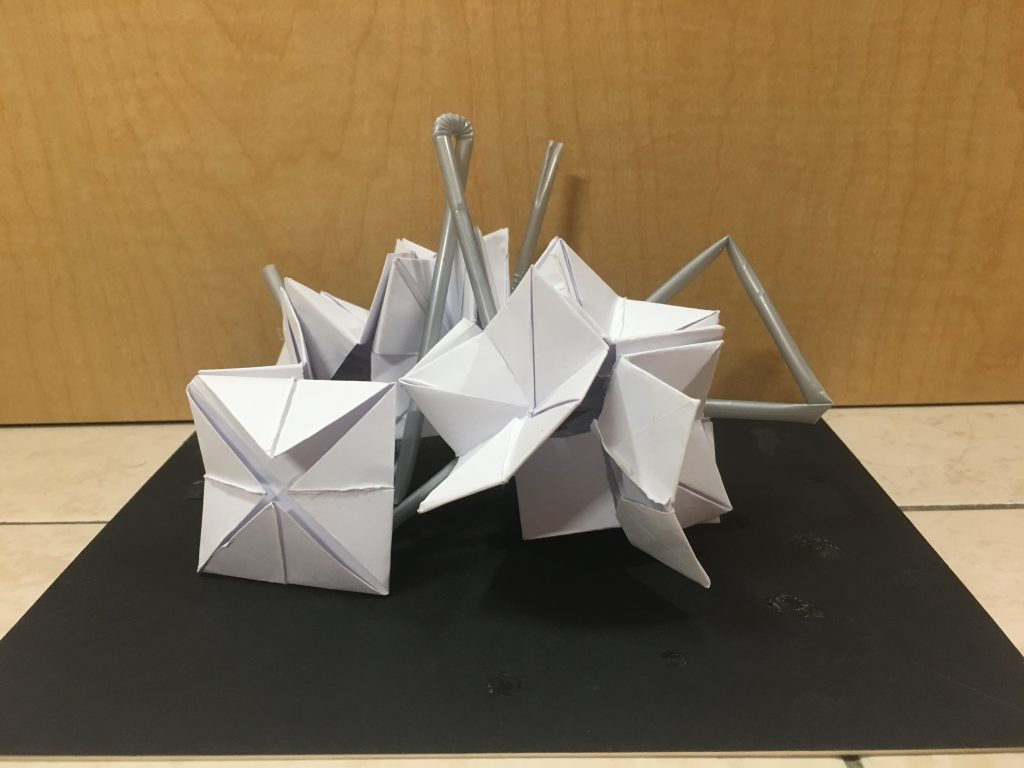
Thorough anatomical research findings and I really enjoyed the breadth of your numerous origami explorations. 🙂 I think you’re spot on with your latest “spiralling cube” sound fabric which has successfully captured the range of motion for the neck… it seems rather limiting for the knee though based on what you’ve shown me and the Range of Motion sketches uploaded here. Hope the change of material (tracing paper) has helped in accentuating the sound component.